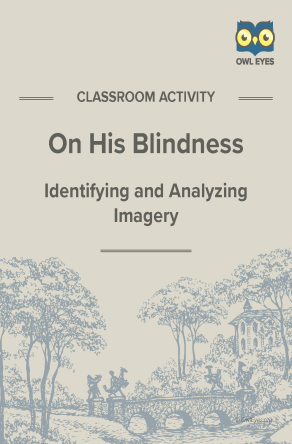On His Blindness Imagery Activity
- 8 pages
- Subject: Imagery, Literary Devices, Tone, Lesson Plans and Educational Resources
- Common Core Standards: RL.11-12.1, RL.11-12.4, RL.9-10.1, RL.9-10.4
Product Description
John Milton’s 1652 sonnet “On His Blindness” reflects on the poet’s loss of vision after being afflicted with glaucoma. In the poem, Milton expresses his worries that if his “light is spent” he will be unable to use his “one talent” as a writer. For Milton, this is a religious concern, for he feels that it is through his talent that he serves God. As the poem reaches its conclusion, Milton comes to the realization that his worth does not depend on his work, only on his faith. Perhaps surprisingly, most of the rich imagery Milton weaves into his poem about blindness is highly visual in nature.
Skills: analysis, drawing inferences from text, close reading, identifying the relationship between words
About This Document
The Owl Eyes Imagery activity gives students an opportunity to practice identifying and analyzing imagery. Imagery within a text creates a sensory experience that can connect readers to a text’s setting, atmosphere, or overall aesthetic. Studying imagery will help students understand how narrators or principal characters feel. The main components of this worksheet include the following:
- A brief introduction to the text
- A handout on types of imagery with examples from classic texts
- A step-by-step guide to activity procedure
- Selected examples of imagery from the text
In completing this worksheet, students will learn to identify and analyze different kinds of imagery in order to develop close reading skills and identify the effect imagery has on their reading experience.







